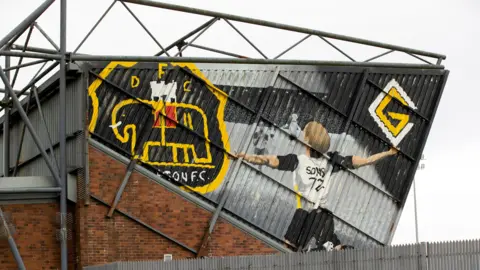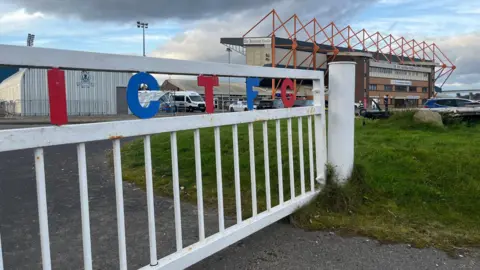Is there a worrying trend in Scottish football's finances?
 SNS
SNSWith two SPFL clubs going into administration in the space of a month, it is reasonable to ask what is going on and whether this is the beginning of a worrying trend.
The news of Dumbarton FC following Inverness Caledonian Thistle in facing insolvency may well come as a surprise to some fans but the shock is not being felt within the boardrooms of fellow clubs.
An SPFL source told me that they are aware of other clubs facing financial issues but that no other administration announcements are imminent.
Those seeking reassurance that these are isolated issues will not get it from those running the game.
That is because they know the week-to-week challenges that many clubs face just to keep the administrators from the door.
Those who run the clubs and fight those battles are never keen to talk publicly about financial concerns.
A mixture of boardroom etiquette and a reluctance to tempt fate keep chats with journalists, mostly, off the record.
What is clear though is that many share the same concerns for the same reasons.
“The issues facing most small businesses are being felt in exactly the same way by some of this country’s football clubs,” said one club owner.
The issue is nothing to do with the customer. Scottish football boasts the best attendances per capita in Europe.
It is true that many clubs feared fans might stay away following Covid, but while their loyalty remains, many clubs feel the game in Scotland is suffering from the effects of the pandemic.
Clubs are now paying back the government bounce back loans that were designed to keep small businesses afloat during the pandemic.
Most drew down financial assistance to the tune of around £50,000 when games were played behind closed doors, and while that doesn’t seem much, added to other concerns, it is far from insignificant to clubs that can’t show turnover in the millions.
“Clubs haven’t recovered the same income since Covid,” said another owner.
Who is next?
The biggest issue for most is a drop in sponsorship and hospitality revenue.
Most lower league community clubs rely heavily on local businesses to keep them afloat. The butcher, the local takeaway or taxi firm are the ones who buy hospitality packages or sign sponsorship deals.
When those companies feel the strain through the cost-of-living crisis, energy rises or the recent rise in National Insurance, they cut costs and very often football falls foul.
“It’s the part that nobody thinks about but it’s so obvious,” said one League One club’s chairman.
The loyalty of the fans isn’t enough to financially wash the face of the majority of clubs in Scotland – in fact it’s very often a small percentage of turnover for most.
The majority of revenue comes through SPFL payments and sponsorship.
The League is doing what it can to help ease the burden with record payments to clubs announced earlier this year but they know that without the support of local business, many will face ruin.
 PA Media
PA MediaOther issues mentioned include player wage inflation.
One League One chairman told me that five years ago his players were earning on average £175 per week. That has now increased to around £300 per week.
The spending power of some clubs with wealthy backers, determined to rise rapidly through the leagues could be the reason but the issue is being discussed with some concern in the boardrooms of some clubs who struggle to keep up.
So, in terms of administration, who is next?
That is also a topic of concern, and whispers at boardroom level surround a couple of well-known clubs in particular.
We will not know for sure until the administrators come calling but given how some clubs are struggling, it seems a case of when and not if.
